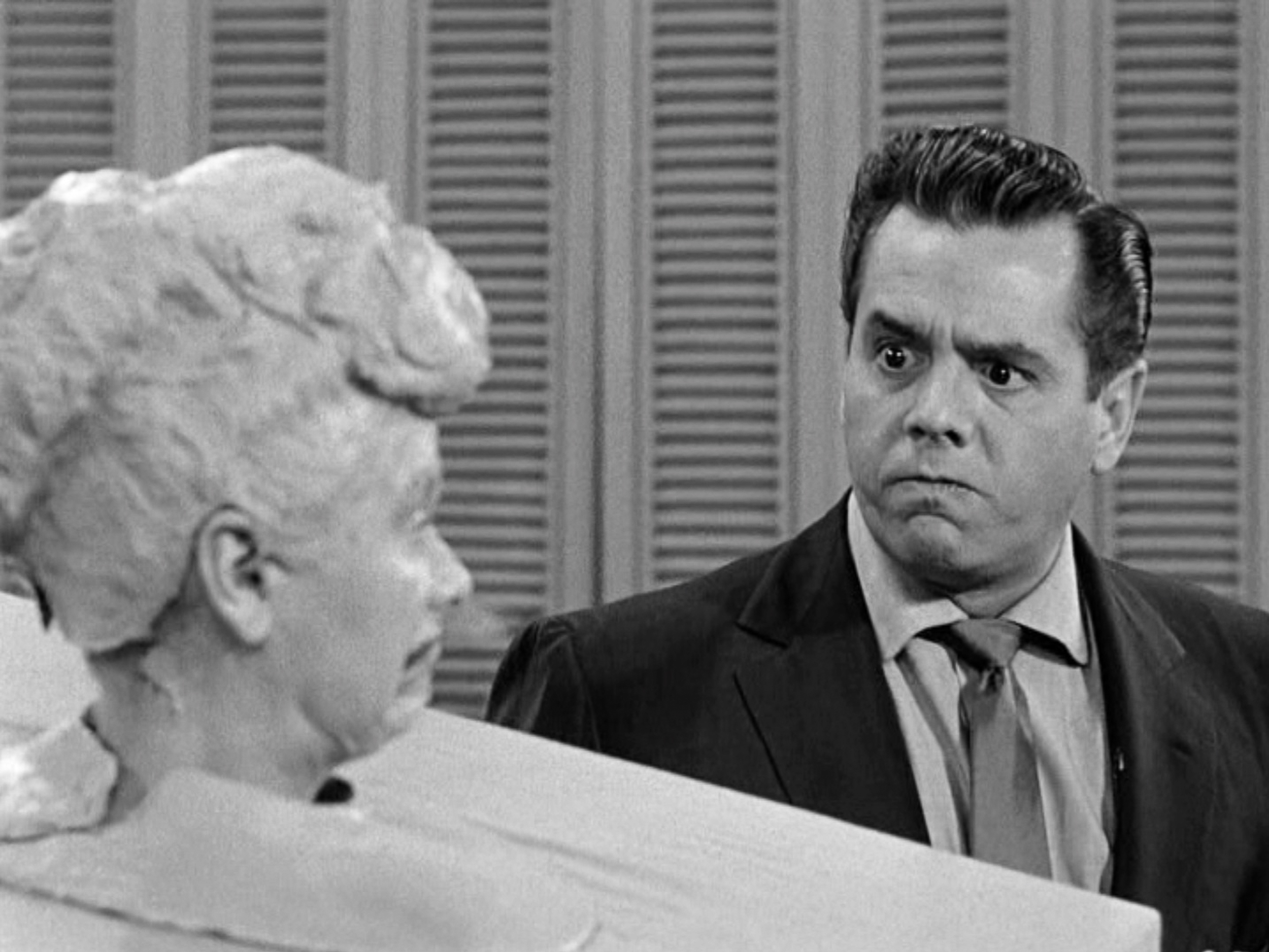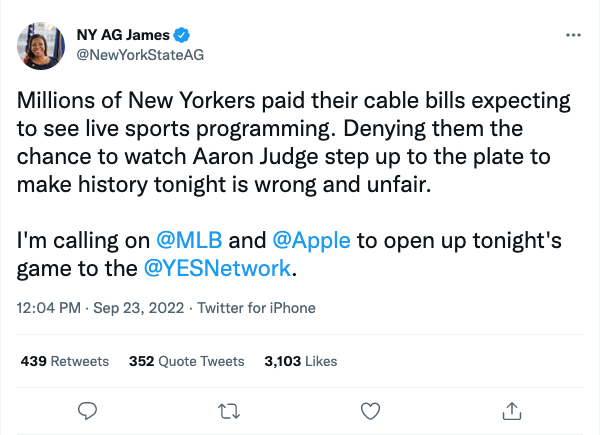
New York State Attorney General Letitia James recently issued a press release and accompanying tweet calling for Apple TV to allow an upcoming Yankees game to be seen on YES, the New York Yankees’ regional sports network (RSN) that traditionally hosts all of their games.

James, who to be fair, was likely reacting to complaints from multiple constituents, mistakenly claimed that Yankees fans (who were anxiously waiting for Aaron Judge to tie Roger Maris’ American League home run record) were being done a disservice by Apple, as they’d paid for YES, and now Apple was making them pay again.
While industry commentators and fans in general were quick to point out that Apple did not, in fact, charge fans to watch MLB games and that, if anything, the massive cable bills required to watch YES were what was really unfair, the incident pointed out an important issue: Viewers find the entire streaming ecosystem incredibly confusing, sports even more so.
It should not be that hard. Most streaming interfaces make it relatively easy to find sporting events once you are in the app, even offering up tiles that link to live games for teams you like on services you subscribe to.
But figuring out what game is on what app and what it might cost is another story. And fixing that gap will be key to the leagues successfully making the move to streaming.
Not Everyone Is Tech Savvy
The noted columnist H.L. Mencken once said that “no one ever went broke underestimating the intelligence of the American people,” a statement that is still quite relevant today if you substitute “tech-savviness” for “intelligence.”
While most of us in the media-tech industry have figured out all the nuances between the various business models on streaming, there are a whole lot of users who understandably don’t, especially the what is free and what is not free part.
The smarter way to stay on top of the streaming and OTT industry. Sign up below.
That’s something that crops up fairly often with Amazon Prime Video, where some of the programming is free if you have a subscription, but some is only available via Amazon’s TVOD (transactional video on demand) model where you need to buy or rent the movie or program in order to watch it.
Given that most people see the video they get with Prime as a nice perk that’s included in the free two-day delivery, that’s not been much of an issue to date. Besides, having to pay $1.99 to watch an episode of a random sitcom isn’t a very high-stakes transaction.
Sports, however, is a different story, as NBCUniversal found out when it launched the 2021 Summer Olympics on Peacock and many fans were surprised to learn there were events they had to pay to see because, it turned out, Peacock was a pay service after all.
While some of that is on NBCU, much of it is on the generally confusing nature of streaming where some services are free, some are paid, some are paid but ad-supported and many are a mix of some combination of the above.
Which brings us back to sports.
Sports programming — the RSNs in particular — are often blamed for the high price of cable bundles. That is one reason why the two largest vMVPDs — Hulu Live TV and YouTube TV — do not carry YES.
Yet the RSNs are also the reason many fans still subscribe to those high-priced cable bundles.
That is not surprising, though, if you look at the nature of sports fans. There are, on a very macro level, two types of sports fans (with massive overlap between the two.)
There are what we might call “ESPN fans” — fans who have a favorite team, but who are happy to watch any reasonably good match-up because they like watching certain sports, regardless of who is playing.
And then there are the “RSN fans,” who are happy to watch any basketball game … so long as the Celtics (or whatever their favorite team might be) are playing in it.
For years those RSN fans knew that there would be games they would not be able to watch on their RSN of choice, but rather, would need to watch on one of the broadcast networks or ESPN.
Those were few and far between and, given that they already had a cable subscription, easy enough to navigate to.
With streaming, the stakes are much higher, especially if you are not all that tech savvy. As James noted in her correction, while Apple TV Plus’s broadcast might be free, “it creates requirements including an Apple ID, a smart TV or streaming device, or WiFi or cellular service.”
Start Spreading The Word
Apple quickly enlisted comedian Jon Stewart to spread the word that the games were free, but the sports and streaming industries overall should see this as an opportunity to educate the many fans who have been actively avoiding streaming and bring them on board.
This is particularly critical right now since many RSNs, led by Sinclair’s Bally Sports group, are indeed making the move to streaming, setting themselves up as subscription apps.
It’s even more critical because while the apps can help the major sports leagues attract the younger audiences they’ve been missing, they are going to still need to appeal to the older audiences who have been their bread and butter for years.
Teams and leagues can do anything from the simple (sending out a how-to-stream-our-games guide via email and direct mail to their mailing lists) to the complex (strike a deal with an OEM to provide discounts for fans on devices that come with the team’s RSN app preinstalled along with apps that cover the league).
There are a lot of ways forward, but the more the various teams and leagues can walk their fans through the process and help them to see that streaming is an easier and lower-cost option than a full-on cable subscription, with greater opportunities for interactivity and engagement, the better off they will be in the long run. ▪️
Alan Wolk is the co-founder and lead analyst for media consultancy TV[R]EV

